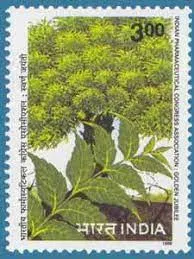Neem, scientifically known as Azadirachta indica, is a remarkable tree that has been revered for centuries in traditional Indian medicine and Ayurveda. Known for its numerous health benefits and ecological significance, Neem has earned the title of "The Versatile Tree of Healing and Wellness."
The title itself captures the essence of Neem, highlighting its multifaceted nature and its extensive applications in various domains. From its medicinal properties to its environmental contributions, Neem continues to be a source of fascination and admiration.
Neem has been used in Ayurveda for its therapeutic properties for thousands of years. Its leaves, bark, seeds, and oil contain bioactive compounds such as nimbin, nimbinin, and nimbidin, which possess antimicrobial, antifungal, and anti-inflammatory properties. Neem is believed to help with a range of health conditions, including skin disorders, digestive issues, dental problems, and immune system enhancement.
The tree's leaves are commonly used in the form of pastes, powders, or extracts for skincare, treating acne, and promoting healthy hair. Neem oil, derived from the seeds, is a potent ingredient in various cosmetic and personal care products due to its nourishing and protective properties.
Neem's benefits extend beyond human health. It plays a vital role in environmental sustainability and ecological balance. The tree's bitter taste acts as a natural deterrent against pests, making it an effective organic pesticide. Neem-based products have been widely used in agriculture to control pests, boost crop yield, and reduce the reliance on chemical pesticides, thereby promoting eco-friendly farming practices.
Neem also exhibits soil-improving properties. Its fallen leaves enrich the soil with organic matter and essential nutrients, enhancing soil fertility and supporting plant growth. Furthermore, Neem trees act as carbon sinks, absorbing and storing carbon dioxide, thus mitigating the effects of climate change.
In addition to its medicinal and ecological benefits, Neem holds cultural and religious significance in India. It is considered a sacred tree and is often associated with the goddess Durga and festivals like Navratri. Neem leaves and twigs are used in religious ceremonies and rituals for their purifying and auspicious properties.
With its vast array of applications and benefits, Neem truly embodies the essence of holistic wellness and sustainable living. Its medicinal properties, environmental contributions, and cultural significance make it an invaluable part of India's heritage and natural resources.
In conclusion, Neem stands as a symbol of healing, wellness, and environmental stewardship. Its versatile nature and remarkable properties have earned it a special place in traditional medicine, agriculture, and cultural practices. Embracing the wonders of Neem allows us to tap into its holistic benefits, promoting a healthier lifestyle while contributing to the preservation of our planet.
